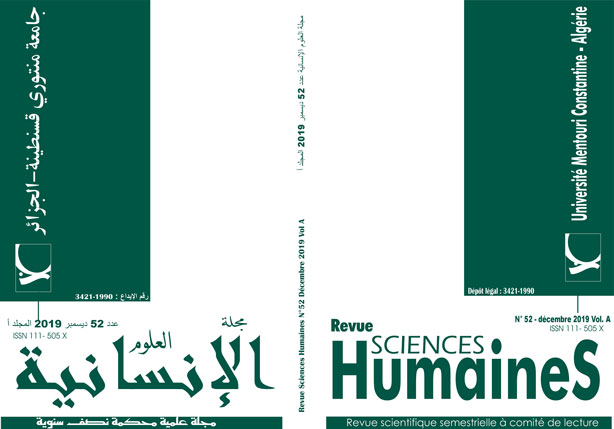The Students’ Attitudes towards the Use of Code Switching and the Different Types that Occur in Speech
Keywords:
code switching phenomenon, attitudes of code switching and types of code switching, ENSC studentsAbstract
This work aims at investigating the different types of code switching and the students’ attitudes towards the use of this phenomenon. The study is conducted at the department of Letter and Arabic languages, ENSC in Constantine and it involves 50 speaking students to answer the questionnaire concerning the attitudes of using code switching and a direct observation is made in which it entails the researcher to assist to different sessions and recording the conversations in order to identify the different types of code switching that occur during the interactions.
Downloads
References
Bentahila, A., & Davies, E. D. (1983). “The Syntax of Arabic-French Code Switching”. Lingua, 59, 301-330.
Bullock, B. & Toribio, A. (2010). Themes in the Study of Code-switching. In B. Bullock & A. Toribio. (eds.) The Cambridge Handbook of Linguistic Code-Switching. Cambridge: Cambridge University Press.
Blom, J. P., & Gumperz, J. J. (1972). Social meaning in linguistic structures: Codeswitching in Norway. In L. Wei (Ed.), The bilingualism reader, (pp. 111-136). London: Routledge
-Crystal, D. (1987). The Cambridge Encyclopedia of Language. Cambridge: Cambridge University Press.
-Gardner-Chloros, P. (2009). Code-switching. Cambridge: Cambridge University Press.
-Gumperz, J, J. (1982). Discourse Strategies. New York, NY: Cambridge University Press
-Haugen, E. (1956). Bilingualism in the Americas: A Bibliography and Research Guide. Publications of the American Dialects Society 26.
-Hymes, D. (1977). Foundations in sociolinguistics. London: Tavistock. 98 Hymes, D. H. (1962). Models of the interaction of language and social life. In J. J. Gumperz & D. H. Hymes (Eds.), Directions in sociolinguistics: The ethnography of communication (pp. 35-71). New York: Holt, Rinehart & Winston.
-Jacobson, R. (ed.) (1990). Code switching as a Worldwide Phenomenon. New York: Peter Lang
-Milroy, I. & Muysken, P. (1995). Introduction: code switching and bilingualism research. In L. Milroy & P. Muysken (Eds), one speaker two languages: Cross- disciplinary perspective on code switching (pp. 1-14). New York: Cambridge University Press.
-Myers-Scotton, C. (1988). Codeswitching as indexical of social negotiations. In M. Heller (Ed.), Codeswitching: Anthropological and sociolinguistic perspectives (pp. 151-86). Berlin: Mouton de Gruyter. Myers-Scotton, C. (1993). Duelling languages: Grammatical structure in codeswitching. Oxford: Clarendon Press.
-Poplack, S. (1980). “Sometimes I’ll start a sentence in English y termino en español: Toward a typology of code-switching”. Linguistics, 18, 581-618.
-Romaine, S. (1995). Bilingualism. Oxford: Blackwell.
-Zentella, A.C ( 1981). Ta bien, you could answer me en cualquier idioma : puerto Rican codeswitching in bilingual classrooms. In R. Duran (Ed), Latino language and
communicative behavior (pp. 109-131). Norwood, NJ : Ablex

















